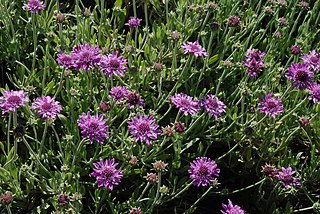
Pterocephalus is a genus of flowering plants in the family Caprifoliaceae of herbs and shrubs, comprising 25 species ranging from the Mediterranean, to central Asia, the Himalayas, western China, and tropical Africa.
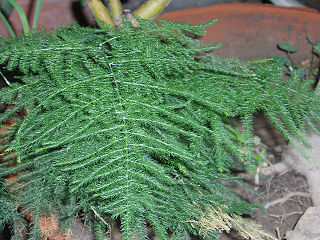
Asparagus is a genus of flowering plants in the family Asparagaceae, subfamily Asparagoideae. It comprises up to 300 species. Most are evergreen long-lived perennial plants growing from the understory as lianas, bushes or climbing plants. The best-known species is the edible Asparagus officinalis, commonly referred to as just asparagus. Some other members of the genus, such as Asparagus densiflorus, are grown as ornamental plants.

Asparagus setaceus, commonly known as common asparagus fern, asparagus grass, lace fern, climbing asparagus, or ferny asparagus, is a climbing plant in the genus Asparagus. Despite its common name, the plant is not a true fern, but has leaves that resemble one.
Asparagus fern is a common name given to several plants in the genus Asparagus. It may refer to:
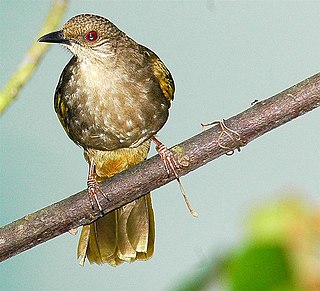
The olive-winged bulbul is a member of the bulbul family of passerine birds. It is found in south-eastern Asia and the Greater Sunda Islands. Its natural habitat is subtropical or tropical moist lowland forests.

The boulder chat is a species of bird in the family Muscicapidae native to dry woodland and savanna in Southern Africa. It is the only species in the monotypic genus Pinarornis.
Scaptesyle is a genus of moths in the subfamily Arctiinae first described by Francis Walker in 1854.

Chironomus plumosus, also known as the buzzer midge, is a species of nonbiting midge (Chironomidae) that occurs throughout areas in the Northern Hemisphere.

Lake Akan is a lake in Kushiro, Hokkaidō, Japan. It is located in Akan National Park and is a Ramsar Site.

Bystropogon is a genus of evergreen shrubs in the family Lamiaceae. It is native to the Canary Islands and Madeira in the western Atlantic Ocean. Allied to the Origanum and Thymus, the genus is characterized by tiny flowers in much-branched clusters, with plume-like sepals that elongate at the fruiting stage, giving the whole tip of each branch a fuzzy appearance. Stems are square in cross-section and leaves, arranged in opposite pairs, are aromatic when crushed.
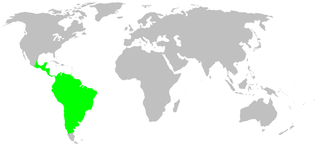
Senoculus is a genus of araneomorph spiders in the family Senoculidae, and was first described by Władysław Taczanowski in 1872. It is the only genus in the family Senoculidae.
Ologamasidae is a family of mites in the order Mesostigmata.
Gamasellus is a genus of mites in the family Ologamasidae.
Periseius is a genus of mites in the family Ologamasidae.
Gamasellus plumosus is a species of mite in the family Ologamasidae.
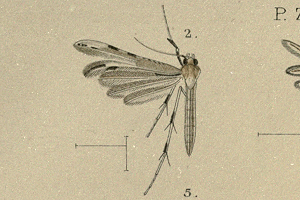
Merrifieldia bystropogonis is a moth of the family Pterophoridae that is found on the Canary Islands and Madeira.

Stephensia cedronellae is a moth of the family Elachistidae. It is found on the Canary Islands.
Scaptesyle plumosus is a moth in the subfamily Arctiinae first described by Rothschild in 1912. It is found on Sumatra, Java, Peninsular Malaysia and Borneo. The habitat consists of coastal areas.
Merenius is a genus of corinnid sac spiders first described by Eugène Simon in 1910.
Anchonastus is a genus of African huntsman spiders that was first described by Eugène Louis Simon in 1898.









